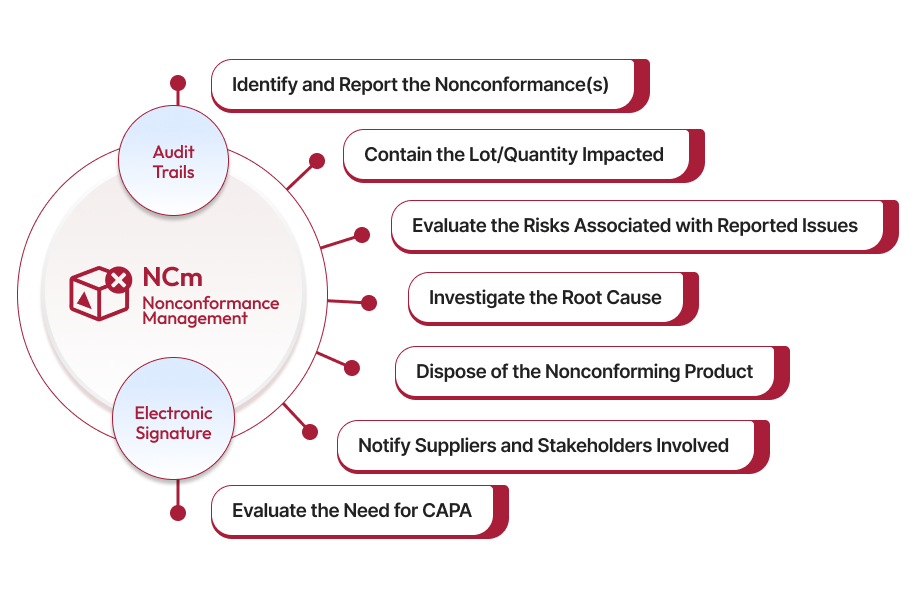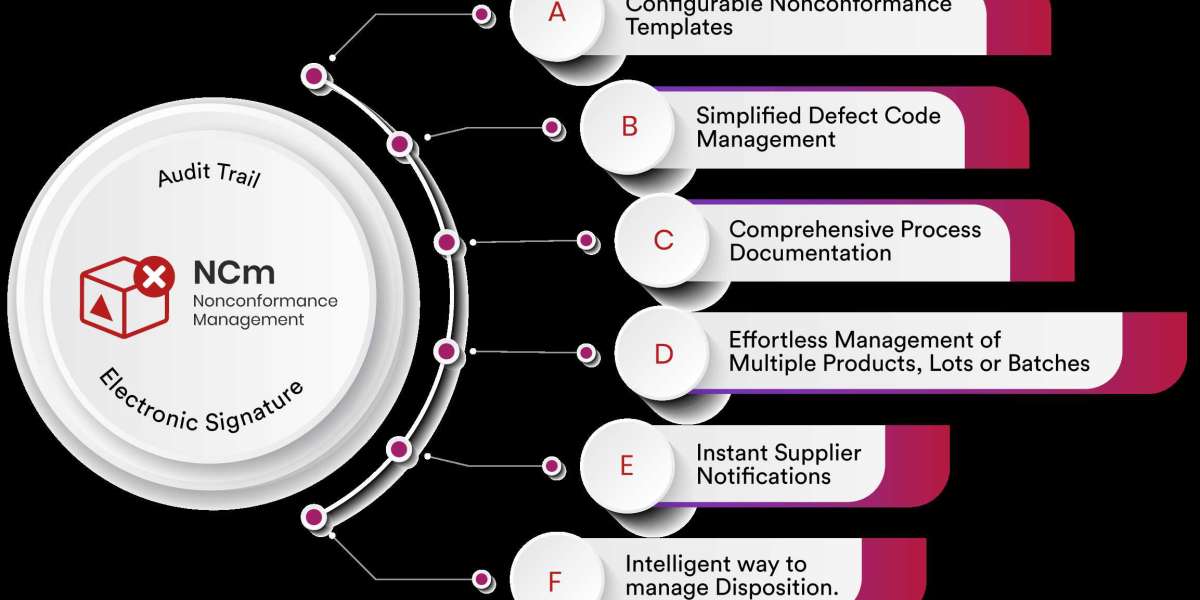
Nonconformance management software system is required by the enterprises to record nonconforming materials and link them to other actions. With the help of this Qualityze nonconformance management software system, you can easily minimize risks and reduce rework and recalls costs by offering easy-to-use tools to capture and assess defect data, reduce nonconformance cycles, integrate documentation, nonconformance, integrate with enterprise business systems and helps in ensuring compliance.
In simple terms, non-conformities are instances where something does not meet the required standards or specifications. They can occur in various areas, including manufacturing, service delivery, quality management systems, and more.
Identifying non-conformities is an important step in maintaining the quality of products or services. Without identifying them, there's no way to resolve the issue and prevent it from happening again. So, let's dive into some best practices for identifying and resolving non-conformities.
Best-Practices to Identify and Resolve Nonconformities
Following are some best-practices you can follow to streamline nonconformance management:
Have a clear understanding of requirements and standards
Before you can identify non-conformities, you need to have a clear understanding of the requirements and standards that need to be met. This means thoroughly reviewing and understanding any relevant documentation, such as standards, specifications, or regulations.
Conduct regular audits and inspections
Regular audits and inspections can help identify non-conformities before they become major issues. It's important to have a structured approach to auditing, including checklists, procedures, and trained auditors.
Encourage employee involvement
Your employees are often the ones who will notice non-conformities before anyone else. Encouraging them to report any potential issues can help catch problems early on, before they become major issues.
Prioritize and categorize non-conformities
Not all non-conformities are created equal. Prioritizing and categorizing them can help you determine which ones are the most critical and require immediate attention. This can also help you allocate resources more effectively.
Investigate root causes
Simply addressing the symptoms of a non-conformity won't solve the underlying problem. It's important to investigate the root cause of the issue and take steps to prevent it from happening again.
Implement corrective actions
Once you've identified the root cause of a non-conformity, you need to take corrective actions to address it. This might involve implementing new processes or procedures, providing additional training to employees, or updating documentation.
Monitor and review
Finally, it's important to monitor and review your corrective actions to ensure that they are effective. This might involve conducting follow-up audits or inspections, tracking metrics, or soliciting feedback from employees.
By following these best practices, you can identify and resolve non-conformities more effectively, ultimately leading to higher quality products or services and greater customer satisfaction. Remember, identifying and resolving non-conformities is an ongoing process, so it's important to continually review and improve your procedures to ensure that you're meeting the highest standards.
If you want to streamline and simplify the nonconformance management processes for your team, consider using a software solution like Qualityze Quality Management Software of Nonconformance System Solutions.











